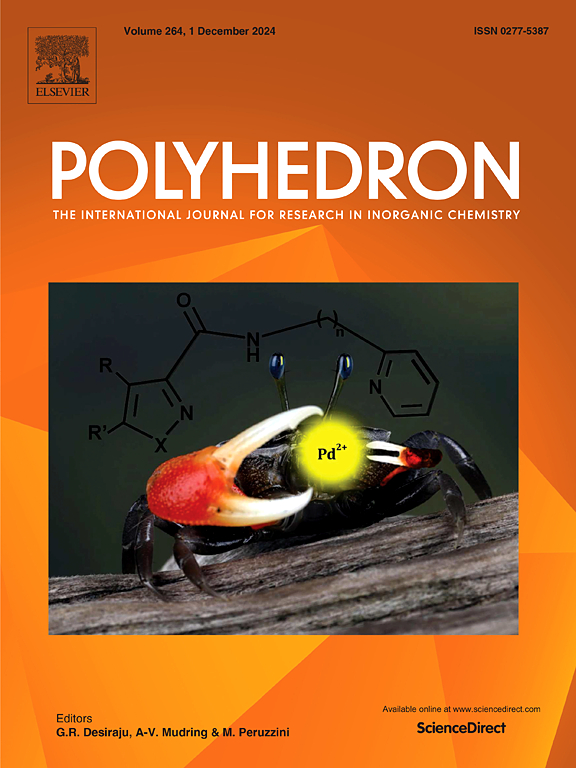从硫酸水溶液中电沉积二氧化镍涂层和粉末
IF 2.4
3区 化学
Q2 CHEMISTRY, INORGANIC & NUCLEAR
引用次数: 0
摘要
复合电化学涂层的发展代表了表面工程的一个重要方向,它可以在保持基底完整性的同时显著改善材料的性能。含有陶瓷颗粒夹杂物的电沉积镍涂层因其增强的机械和耐腐蚀性而特别有前途。采用循环伏安法研究了以二氧化钛为分散相的硫酸盐溶液中Ni2+的还原过程。在阴极极化过程中,镍与二氧化钛一起沉积在铜电极表面,形成Ni-TiO2复合电化学涂层。为了确定镀层的耐蚀性,记录了镍镀层和镍-二氧化钛复合镀层的阳极极化曲线和阴极极化曲线。结果表明,复合涂层在阳极极化下具有抗溶解性能。采用x射线荧光光谱、扫描电镜和能量色散光谱对制备的Ni-TiO2复合涂层进行了研究。实验中获得的含二氧化钛包体的镍粉由于其磁性和组分间的协同作用而具有独特的性能。镍的磁性使这种材料在生产磁铁、磁芯、传感器、传感器和数据存储设备等领域不可或缺,而二氧化钛的掺入对于提供额外的抗氧化性和提高机械强度特别有用。本研究有助于利用相对简单的生产方法开发出具有更好的耐腐蚀性和性能特征的先进功能材料。本文章由计算机程序翻译,如有差异,请以英文原文为准。

Electrodeposition of nickel-titanium dioxide coatings and powders from aqueous sulfate solutions
The development of composite electrochemical coatings represents an important direction in surface engineering that allows significant improvement of material properties while maintaining substrate integrity. Electrodeposited nickel coatings with ceramic particle inclusions are particularly promising due to their enhanced mechanical and corrosion resistance characteristics. The reduction process of Ni2+ from sulfate solutions containing titanium dioxide as a dispersed phase was studied by cyclic voltammetry. It was established that during cathodic polarization, nickel is deposited on the copper electrode surface together with titanium dioxide, forming a Ni-TiO2 composite electrochemical coating. To determine the corrosion resistance of the coatings, anodic and cathodic polarization curves were recorded for both nickel coating and nickel-titanium dioxide composite coating. It was shown that the composite coating exhibits resistance to dissolution under anodic polarization.
The obtained Ni-TiO2 composite coatings were studied using X-ray fluorescence spectroscopy, scanning electron microscopy, and energy dispersive spectrometry. The nickel powders with titanium dioxide inclusions obtained during the experiments represent materials with unique performance properties due to their magnetic nature and synergistic interaction between components. The magnetic properties of nickel make this material indispensable in such areas as the production of magnets, magnetic cores, sensors, transducers and data storage devices, while the incorporation of titanium dioxide is particularly useful for providing additional oxidation resistance and increasing mechanical strength. This research contributes to the development of advanced functional materials with improved corrosion resistance and performance characteristics using a relatively simple production method.
求助全文
通过发布文献求助,成功后即可免费获取论文全文。
去求助
来源期刊

Polyhedron
化学-晶体学
CiteScore
4.90
自引率
7.70%
发文量
515
审稿时长
2 months
期刊介绍:
Polyhedron publishes original, fundamental, experimental and theoretical work of the highest quality in all the major areas of inorganic chemistry. This includes synthetic chemistry, coordination chemistry, organometallic chemistry, bioinorganic chemistry, and solid-state and materials chemistry.
Papers should be significant pieces of work, and all new compounds must be appropriately characterized. The inclusion of single-crystal X-ray structural data is strongly encouraged, but papers reporting only the X-ray structure determination of a single compound will usually not be considered. Papers on solid-state or materials chemistry will be expected to have a significant molecular chemistry component (such as the synthesis and characterization of the molecular precursors and/or a systematic study of the use of different precursors or reaction conditions) or demonstrate a cutting-edge application (for example inorganic materials for energy applications). Papers dealing only with stability constants are not considered.
 求助内容:
求助内容: 应助结果提醒方式:
应助结果提醒方式:


